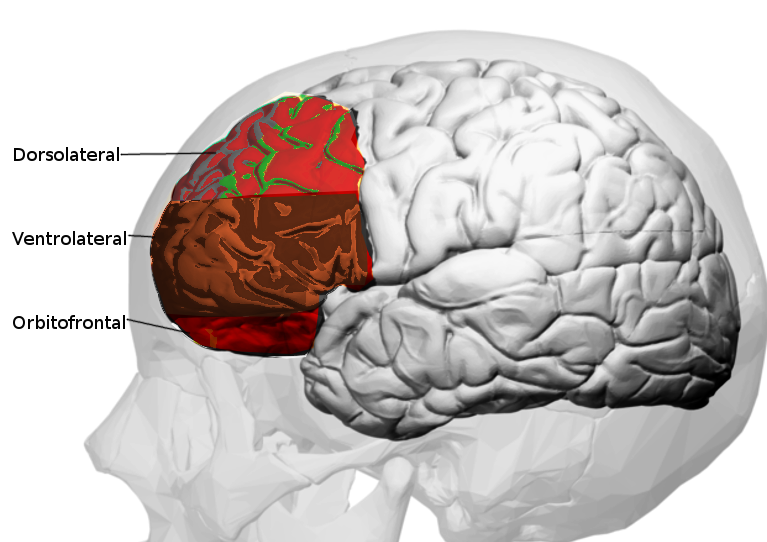[1]
Schmitz TW, Correia MM, Ferreira CS, Prescot AP, Anderson MC. Hippocampal GABA enables inhibitory control over unwanted thoughts. Nature communications. 2017 Nov 3:8(1):1311. doi: 10.1038/s41467-017-00956-z. Epub 2017 Nov 3
[PubMed PMID: 29101315]
[2]
De Raedt R, Remue J, Loeys T, Hooley JM, Baeken C. The effect of transcranial direct current stimulation of the prefrontal cortex on implicit self-esteem is mediated by rumination after criticism. Behaviour research and therapy. 2017 Dec:99():138-146. doi: 10.1016/j.brat.2017.10.009. Epub 2017 Oct 21
[PubMed PMID: 29101842]
[3]
Datta D, Arnsten AFT. Loss of Prefrontal Cortical Higher Cognition with Uncontrollable Stress: Molecular Mechanisms, Changes with Age, and Relevance to Treatment. Brain sciences. 2019 May 17:9(5):. doi: 10.3390/brainsci9050113. Epub 2019 May 17
[PubMed PMID: 31108855]
[4]
Agarwal P, Sarris CE, Herschman Y, Agarwal N, Mammis A. Schizophrenia and neurosurgery: A dark past with hope of a brighter future. Journal of clinical neuroscience : official journal of the Neurosurgical Society of Australasia. 2016 Dec:34():53-58. doi: 10.1016/j.jocn.2016.08.009. Epub 2016 Sep 12
[PubMed PMID: 27634495]
[5]
Radel R, Tempest G, Denis G, Besson P, Zory R. Extending the limits of force endurance: Stimulation of the motor or the frontal cortex? Cortex; a journal devoted to the study of the nervous system and behavior. 2017 Dec:97():96-108. doi: 10.1016/j.cortex.2017.09.026. Epub 2017 Oct 9
[PubMed PMID: 29101820]
[6]
Kubera KM, Hirjak D, Wolf ND, Sambataro F, Thomann PA, Wolf RC. Intrinsic Network Connectivity Patterns Underlying Specific Dimensions of Impulsiveness in Healthy Young Adults. Brain topography. 2018 May:31(3):477-487. doi: 10.1007/s10548-017-0604-9. Epub 2017 Nov 3
[PubMed PMID: 29101492]
[7]
Callaghan BL, Dandash O, Simmons JG, Schwartz O, Byrne ML, Sheeber L, Allen NB, Whittle S. Amygdala Resting Connectivity Mediates Association Between Maternal Aggression and Adolescent Major Depression: A 7-Year Longitudinal Study. Journal of the American Academy of Child and Adolescent Psychiatry. 2017 Nov:56(11):983-991.e3. doi: 10.1016/j.jaac.2017.09.415. Epub 2017 Sep 19
[PubMed PMID: 29096781]
[8]
Selemon LD, Zecevic N. Schizophrenia: a tale of two critical periods for prefrontal cortical development. Translational psychiatry. 2015 Aug 18:5(8):e623. doi: 10.1038/tp.2015.115. Epub 2015 Aug 18
[PubMed PMID: 26285133]
[10]
Stiles J, Jernigan TL. The basics of brain development. Neuropsychology review. 2010 Dec:20(4):327-48. doi: 10.1007/s11065-010-9148-4. Epub 2010 Nov 3
[PubMed PMID: 21042938]
[12]
Noé FM, Marchi N. Central nervous system lymphatic unit, immunity, and epilepsy: Is there a link? Epilepsia open. 2019 Mar:4(1):30-39. doi: 10.1002/epi4.12302. Epub 2019 Feb 14
[PubMed PMID: 30868113]
[13]
Schulz R, Runge CG, Bönstrup M, Cheng B, Gerloff C, Thomalla G, Hummel FC. Prefrontal-Premotor Pathways and Motor Output in Well-Recovered Stroke Patients. Frontiers in neurology. 2019:10():105. doi: 10.3389/fneur.2019.00105. Epub 2019 Feb 14
[PubMed PMID: 30837935]
[14]
Henschke JU, Oelschlegel AM, Angenstein F, Ohl FW, Goldschmidt J, Kanold PO, Budinger E. Early sensory experience influences the development of multisensory thalamocortical and intracortical connections of primary sensory cortices. Brain structure & function. 2018 Apr:223(3):1165-1190. doi: 10.1007/s00429-017-1549-1. Epub 2017 Nov 1
[PubMed PMID: 29094306]
[15]
Hanson JL, Chung MK, Avants BB, Rudolph KD, Shirtcliff EA, Gee JC, Davidson RJ, Pollak SD. Structural variations in prefrontal cortex mediate the relationship between early childhood stress and spatial working memory. The Journal of neuroscience : the official journal of the Society for Neuroscience. 2012 Jun 6:32(23):7917-25. doi: 10.1523/JNEUROSCI.0307-12.2012. Epub
[PubMed PMID: 22674267]
[16]
Gudbrandsen M, Daly E, Murphy CM, Wichers RH, Stoencheva V, Perry E, Andrews D, Blackmore CE, Rogdaki M, Kushan L, Bearden CE, Murphy DGM, Craig MC, Ecker C. The Neuroanatomy of Autism Spectrum Disorder Symptomatology in 22q11.2 Deletion Syndrome. Cerebral cortex (New York, N.Y. : 1991). 2019 Jul 22:29(8):3655-3665. doi: 10.1093/cercor/bhy239. Epub
[PubMed PMID: 30272146]
[17]
Widge AS, Zorowitz S, Basu I, Paulk AC, Cash SS, Eskandar EN, Deckersbach T, Miller EK, Dougherty DD. Deep brain stimulation of the internal capsule enhances human cognitive control and prefrontal cortex function. Nature communications. 2019 Apr 4:10(1):1536. doi: 10.1038/s41467-019-09557-4. Epub 2019 Apr 4
[PubMed PMID: 30948727]
[18]
Nejad AB, Rotgé JY, Valabregue R, Guérin-Langlois C, Hoertel N, Gorwood P, Dubertret C, Limosin F, Fossati P, Lemogne C. Medial prefrontal disengagement during self-focus in formerly depressed patients prone to rumination. Journal of affective disorders. 2019 Mar 15:247():36-44. doi: 10.1016/j.jad.2019.01.004. Epub 2019 Jan 4
[PubMed PMID: 30641339]
[19]
Doruyter A, Dupont P, Taljaard L, Stein DJ, Lochner C, Warwick JM. Resting regional brain metabolism in social anxiety disorder and the effect of moclobemide therapy. Metabolic brain disease. 2018 Apr:33(2):569-581. doi: 10.1007/s11011-017-0145-7. Epub 2017 Nov 3
[PubMed PMID: 29101601]
[20]
Tüshaus L, Omlin X, Tuura RO, Federspiel A, Luechinger R, Staempfli P, Koenig T, Achermann P. In human non-REM sleep, more slow-wave activity leads to less blood flow in the prefrontal cortex. Scientific reports. 2017 Nov 3:7(1):14993. doi: 10.1038/s41598-017-12890-7. Epub 2017 Nov 3
[PubMed PMID: 29101338]

